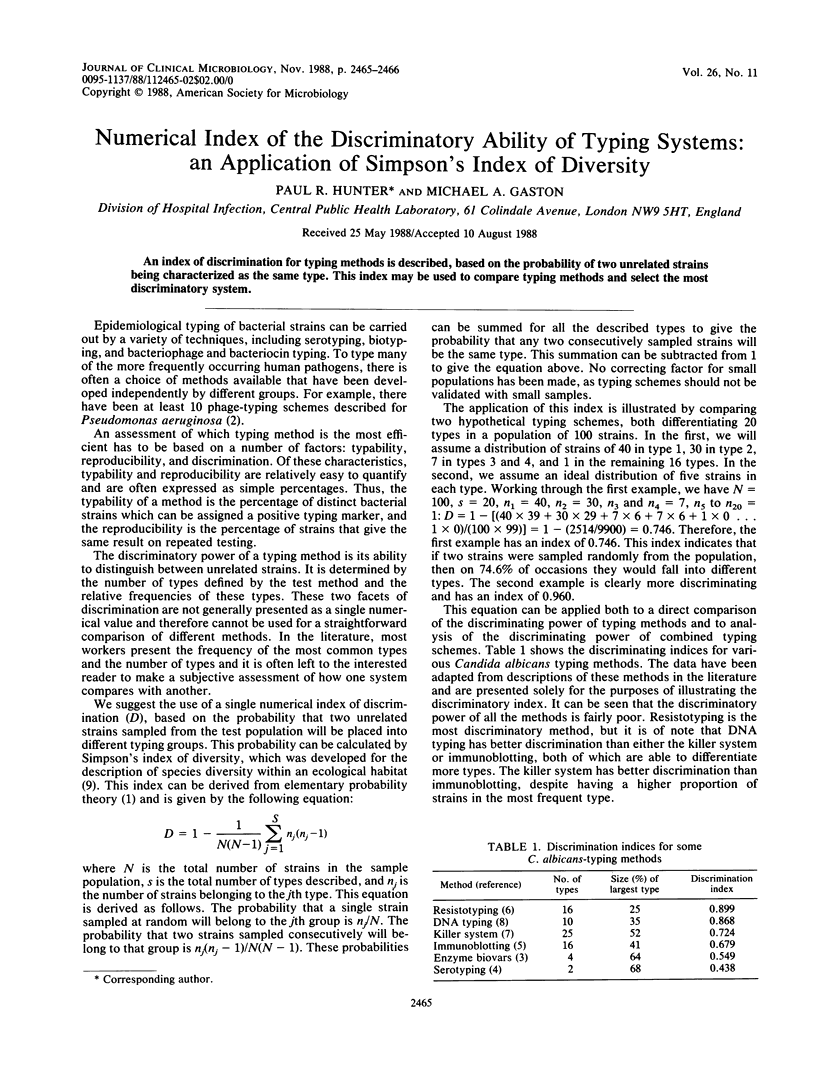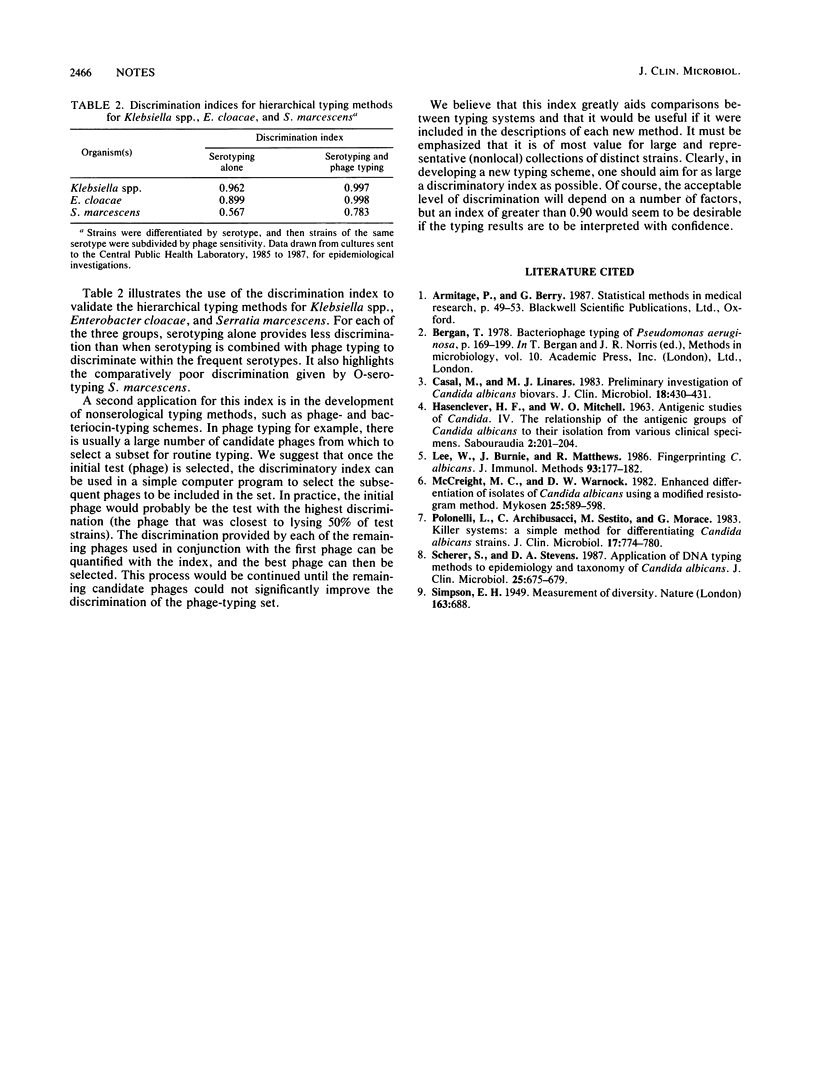Abstract
An index of discrimination for typing methods is described, based on the probability of two unrelated strains being characterized as the same type. This index may be used to compare typing methods and select the most discriminatory system.
Full text
PDF

Selected References
These references are in PubMed. This may not be the complete list of references from this article.
- Lee W., Burnie J., Matthews R. Fingerprinting Candida albicans. J Immunol Methods. 1986 Nov 6;93(2):177–182. doi: 10.1016/0022-1759(86)90186-9. [DOI] [PubMed] [Google Scholar]
- McCreight M. C., Warnock D. W. Enhanced differentiation of isolates of Candida albicans using a modified resistogram method. Mykosen. 1982 Nov;25(11):589–598. doi: 10.1111/j.1439-0507.1982.tb01926.x. [DOI] [PubMed] [Google Scholar]
- Polonelli L., Archibusacci C., Sestito M., Morace G. Killer system: a simple method for differentiating Candida albicans strains. J Clin Microbiol. 1983 May;17(5):774–780. doi: 10.1128/jcm.17.5.774-780.1983. [DOI] [PMC free article] [PubMed] [Google Scholar]
- Román M. C., Linares Sicilia M. J. Preliminary investigation of Candida albicans biovars. J Clin Microbiol. 1983 Aug;18(2):430–431. doi: 10.1128/jcm.18.2.430-431.1983. [DOI] [PMC free article] [PubMed] [Google Scholar]
- Scherer S., Stevens D. A. Application of DNA typing methods to epidemiology and taxonomy of Candida species. J Clin Microbiol. 1987 Apr;25(4):675–679. doi: 10.1128/jcm.25.4.675-679.1987. [DOI] [PMC free article] [PubMed] [Google Scholar]


